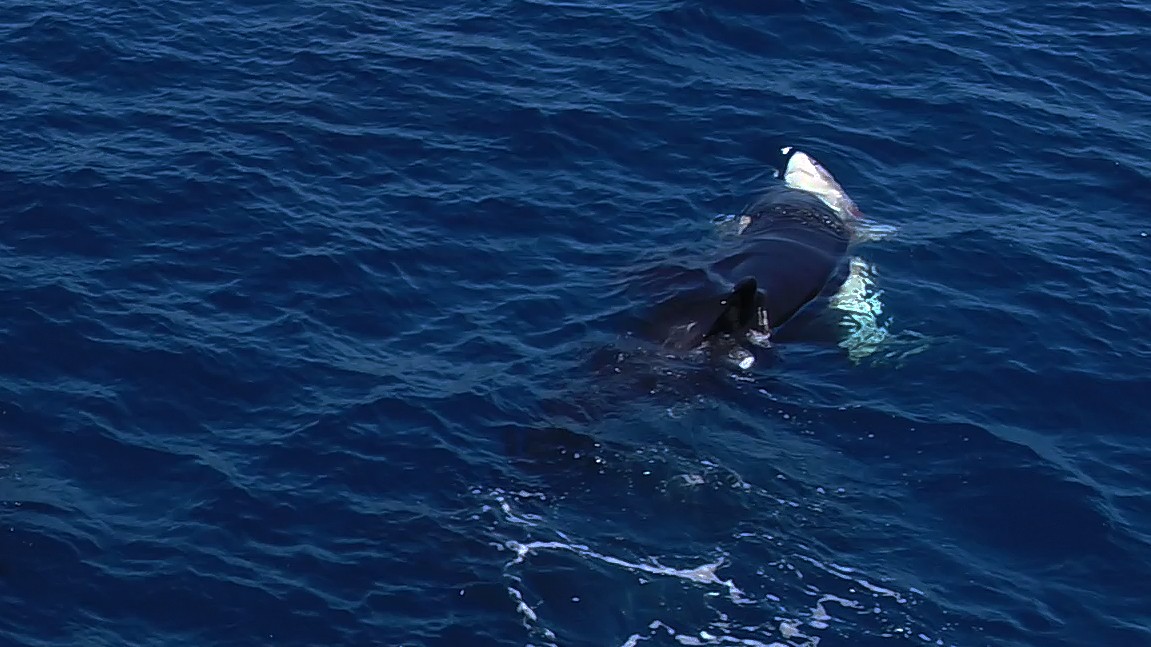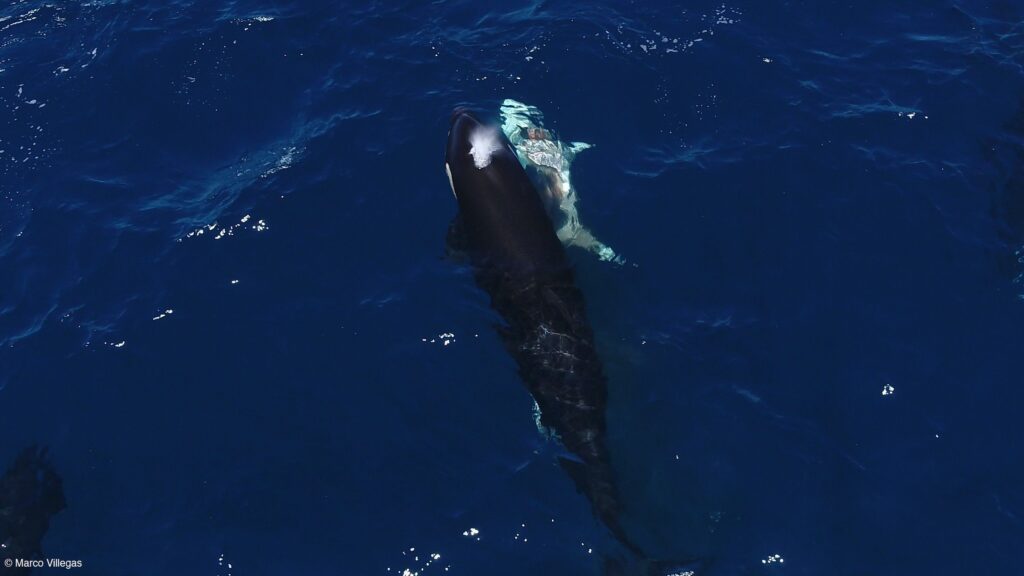Researchers have observed for the first time that killer whales repeatedly attack and devour the livers of juvenile great white sharks in the Gulf of California.
Killer whales (Orcinus orca) employ a brutal but clever method to temporarily paralyze their prey, according to a new study. The technique involved turning the small shark upside down, altering its awareness of its surroundings and forcing it into a trance-like state known as tonic immobility.
“This temporary state leaves the shark defenseless, and the killer whale is likely to extract the nutrient-rich liver and eat other organs before abandoning the rest of the carcass,” study lead author Jesús Eric Higuera Rivas, a marine biologist and director of the nonprofit research organization Conexiones Terramar, said in a statement.
you may like
Killer whales have since been observed sharing shark livers with each other on three separate occasions. The attack was carried out off the coast of Mexico by the Moctezuma pod, a group of killer whales named after the large male member who made headlines last year for brutally killing a whale shark (Rhincodon typus).
Killer whales were already known to hunt great white sharks (Carcharodon carcharya) in some areas, such as South Africa and Australia, but records of this behavior in the northeastern Pacific Ocean are extremely rare, with the last reliable sighting recorded off the West Coast in 1997. Most of the sightings in South Africa and Australia are of adult great white sharks, whose larger size and organs make them more food for killer whales.
To date, there has only been one report of an orca killing a juvenile great white shark. The attack occurred in 2023 off the coast of South Africa by a notorious killer whale named Starboard. The predator grabbed the young great white shark by its pectoral fins and thrust it forward several times before eviscerating its body, the report said.
New observations published Monday (Nov. 3) in the marine science journal Frontiers reveal that killer whale attacks on young great white sharks are more widespread than scientists thought.
“This is the first time that killer whales have repeatedly targeted juvenile great white sharks,” study co-author Salvador Jorgensen, a marine ecologist at California State University, Monterey Bay, said in a statement. “Adult great white sharks respond quickly to killer whale hunting, completely evacuating their seasonal gathering areas, and not returning for months. However, these juvenile great white sharks may be ignorant towards killer whales. We do not yet know whether the great white shark’s anti-predator flight response is instinctive or needs to be learned.”

According to the study, two of the three attacks occurred in August 2020. Five female killer whales in the Moctezuma pod chased a young great white shark until it tired, then pushed it to the surface and flipped it onto its back. The killer whale eventually pushed the shark underwater, and when it reappeared, it had the liver in its mouth, researchers said. Immediately after this kill, the killer whale continued running for several seconds, chasing and disemboweling a second young great white shark.
The third attack occurred in August 2022 and followed a similar sequence. Five killer whales, including one adult male, turned the young great white upside down like a pancake, pushed it to the surface and bit it. Blood gushed from the shark’s gills and its liver protruded from its abdomen, big enough for an orca to grab.
you may like

A closer look at the shark’s injury site suggests that tonic immobility may minimize the chance of being bitten by an orca as it attempts to remove the liver. Selecting juvenile prey also limits the risk to killer whales, but it is unclear whether orcas in the Gulf of California only kill juveniles or whether they also regularly attack adult great white sharks.
“This behavior is evidence of the killer whales’ high intelligence, strategic thinking and sophisticated social learning, with hunting techniques passed down from generation to generation within their pods,” Higuera Rivas said.
One reason this behavior is being discovered now may be that great white sharks have only recently begun breeding in Mexican waters. Rising ocean temperatures and weather events such as El Niño appear to have changed the distribution of great white shark nursery sites, and the octopus pods are likely taking advantage of the increased number of juveniles in the Gulf of California.
Francesca Pancaldi, a marine biologist at Mexico’s National Institute of Technology and a co-author of the study, said in a statement that other killer whale pods in the region could be infected. “So far, we have only observed this pod feeding on elasmobranchs. [sharks and rays]”There may be more,” she said.
Source link

